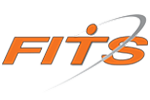2.5 The Importance of Single Leg Squats
One of the most important physical literacy goals from both an injury prevention / physical literacy and sport performance perspective is the ability to perform a single leg squat to depth 3 for 3 sets of 15 reps. In the Law of One Cause with learned that inward movement of the knee will cause many injuries. The single leg squat is a good hip stability challenge for dynamic knee valgus (Common Movement Problem #1). Likewise, each leg is doing something different in sport and play much more than when both legs are doing something similar. For example, each step when you run and change direction is performed with one leg creating an IMPULSE (I’m excited to chat about this!!! But it’ll have to wait until Unit 6) while the other leg is preparing for the next step. You only use two legs at the same time when you are jump.
It’s important to realize, during a single leg stance our centre of mass is inward (medial) to the single leg support. When we are standing on two legs the centre of mass is between or two legs so there isn’t a pull inwards. We’re balanced.
Our body has basically three options to create stability in the single leg stance scenario, otherwise we’ll fall over:
A) Control the position through hip control. The hip produces a stabilizing force to combat the inward position of the centre of gravity
B) Trunk lean away. We can shift the centre of mass over the single leg support by leaning over. I hope you know this isn’t good. We chatted about this in the Trunk Lean Common Movement Problem.
C) Knee Collapse / Dynamic Valgus. We can allow our knee to travel inward.
A combination of B and C often occur. Humans tend to multi-task 😊.
Figure 19: Why a Single Leg Stance creates inward movement of the knee.
2.5.1 What We Learn When we Develop Our Single Leg Squat
During the process to achieve this standard we develop (completely or in part):
1. an understanding of the importance of ankle / foot, knee and hip alignment (Leg Line)
2. how to balance on a single squat
3. how weight needs to be distributed through the feet.
4. How to hinge and load through the hips (Law of the Hinge) with co-contraction of the knees
The simple approach we use to develop the single leg squat can be seen in Figure 14.
Figure 20: The FITS Methods to Develop Single Leg Control
Going through this approach ensures you’ll be able to achieve the single leg squat standard. That’s because this quality is multi-dimensional. It’s like a puzzle with a bunch of pieces. You have to put all puzzle pieces together in order to solve the puzzle.
